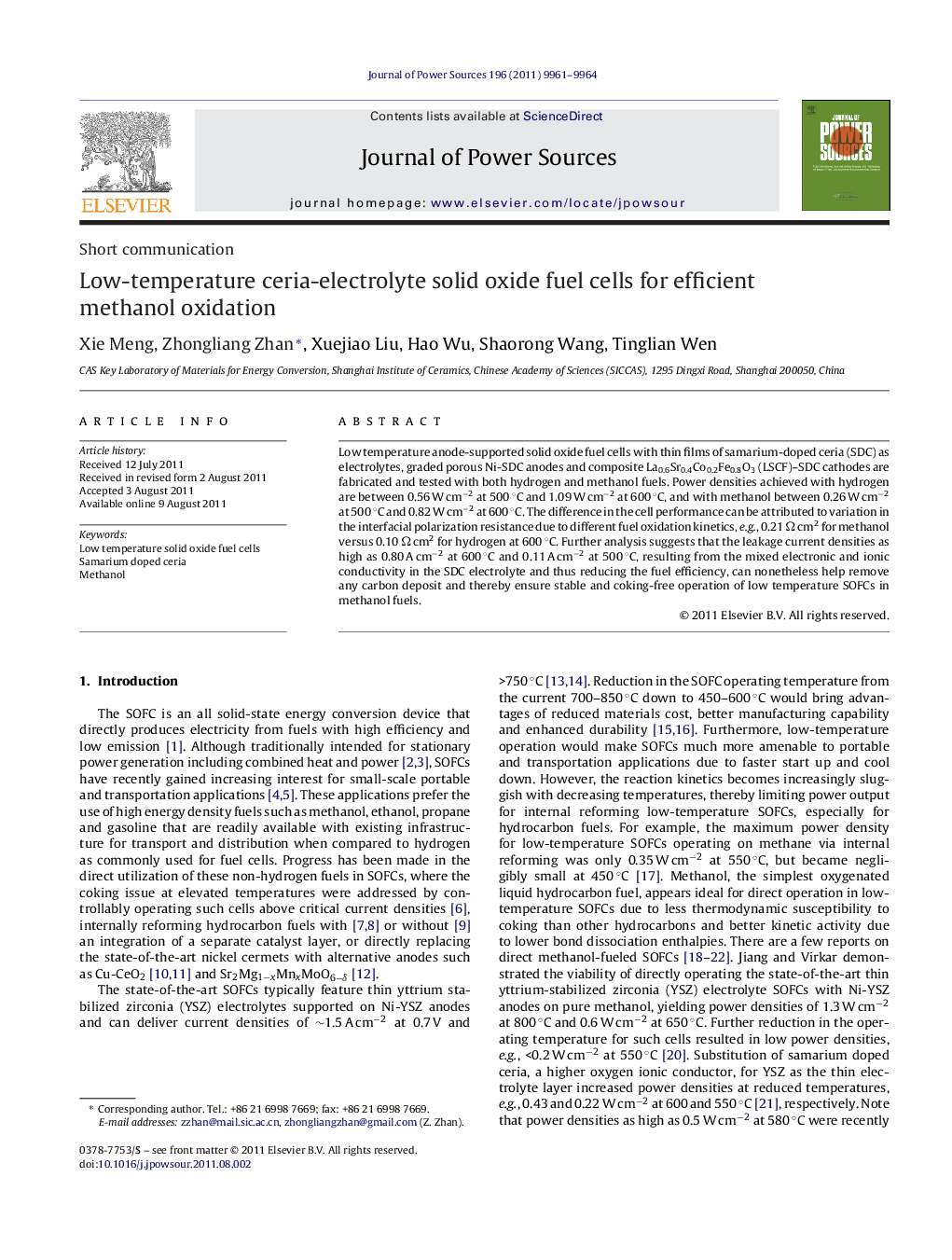| Article ID | Journal | Published Year | Pages | File Type |
|---|---|---|---|---|
| 1288655 | Journal of Power Sources | 2011 | 4 Pages |
Low temperature anode-supported solid oxide fuel cells with thin films of samarium-doped ceria (SDC) as electrolytes, graded porous Ni-SDC anodes and composite La0.6Sr0.4Co0.2Fe0.8O3 (LSCF)–SDC cathodes are fabricated and tested with both hydrogen and methanol fuels. Power densities achieved with hydrogen are between 0.56 W cm−2 at 500 °C and 1.09 W cm−2 at 600 °C, and with methanol between 0.26 W cm−2 at 500 °C and 0.82 W cm−2 at 600 °C. The difference in the cell performance can be attributed to variation in the interfacial polarization resistance due to different fuel oxidation kinetics, e.g., 0.21 Ω cm2 for methanol versus 0.10 Ω cm2 for hydrogen at 600 °C. Further analysis suggests that the leakage current densities as high as 0.80 A cm−2 at 600 °C and 0.11 A cm−2 at 500 °C, resulting from the mixed electronic and ionic conductivity in the SDC electrolyte and thus reducing the fuel efficiency, can nonetheless help remove any carbon deposit and thereby ensure stable and coking-free operation of low temperature SOFCs in methanol fuels.
► Low-temperature ceria electrolyte SOFCs are fabricated with finely structured anodes. ► Maximum power densities of 260–820 mW cm−2 are obtained at 500–600 °C for direct methanol utilization. ► Leakage current densities as high as 0.80 A cm−2 at 600oC and 0.11 A cm−2 at 500 °C help remove carbon deposits and thereby ensure stable and coking-free operation.
